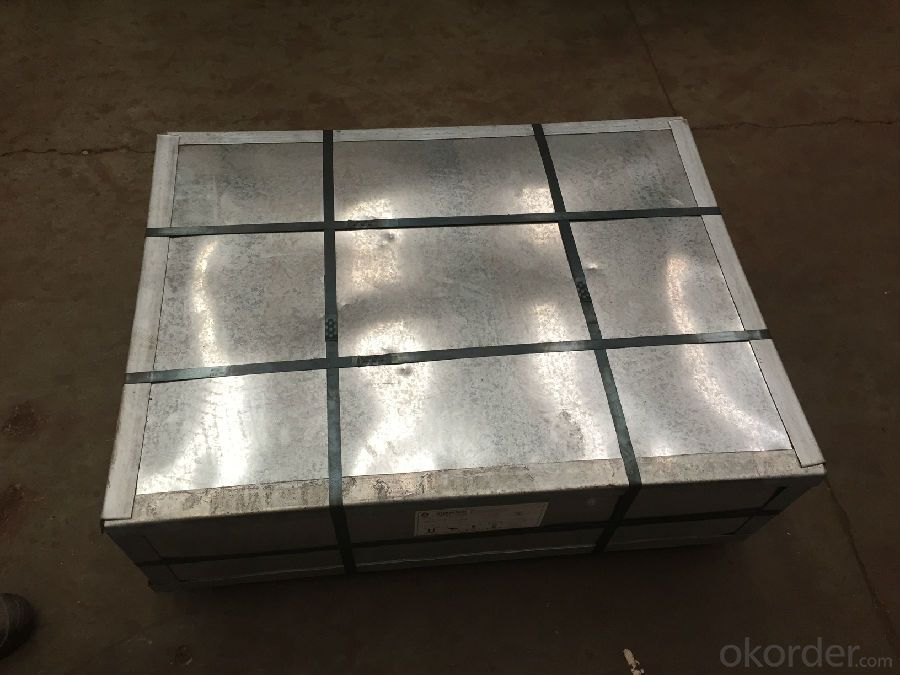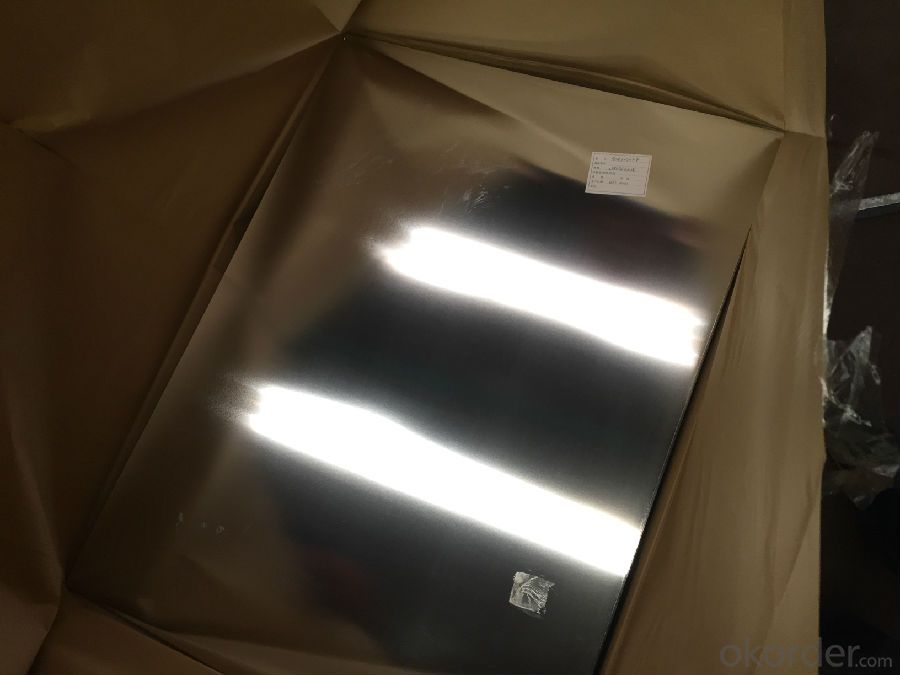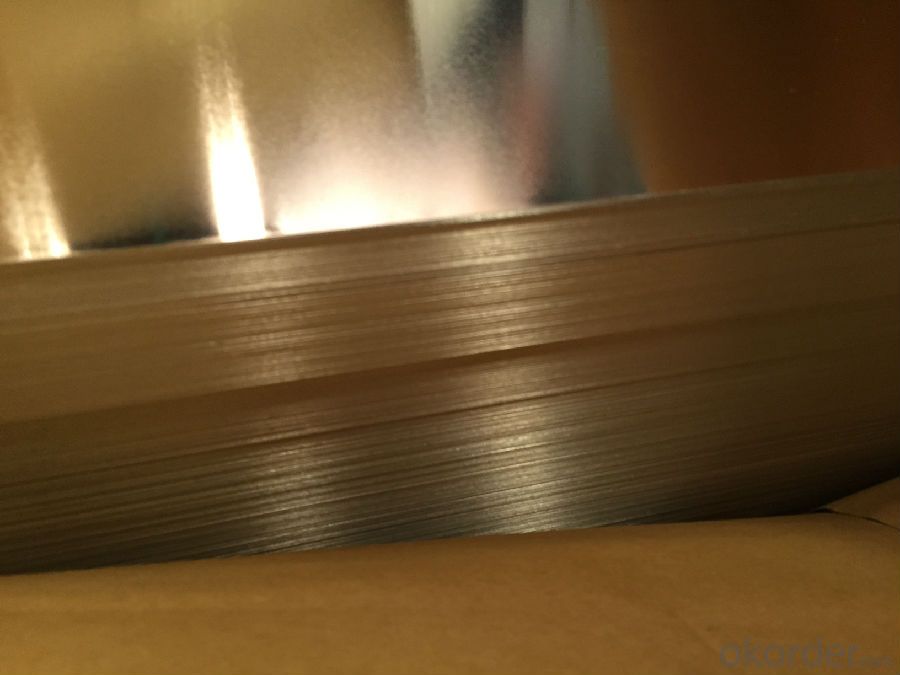Tinplate Making Bakeware and Household Kitchen Parts
- Loading Port:
- Tianjin
- Payment Terms:
- TT OR LC
- Min Order Qty:
- 50 m.t
- Supply Capability:
- 20000 m.t/month
OKorder Service Pledge
OKorder Financial Service
You Might Also Like
Item specifice
Tinplate with prime quality hot sale products
Product Description
- Tinplate, as the name suggests, is coated on both sides with pure tin at various coating weights between 1 and 12 grams per square meter. It has an extremely beautiful metallic luster as well as excellent properties in corrosion resistance, solder ability, and weld ability.
2. Main Features
Tinplate is widely used for making all type of containers, electrical machinery parts and many other products.
3 Pictures.



4. Applications
- Chemical and Painting Cans
- Dry food cans, such as fancy cans, biscuit cans, milk powder cans, tea cans
- Liquid food cans, such as edible oil cans, beverage cans, tomato paste cans
- Sea food cans
- Crown corks, easy open ends
- Electrical Machinery parts
- Bakeware and household kitchen parts
5.FAQ
CNBM is a state- owned enterprise, top 1 in China steel industry, top 500 world wide. Our tinplate annual capacity is 400,000metric tons. First class level with competitive price.
- Q:What are the different methods of cutting and shaping tinplate?
- There are several methods of cutting and shaping tinplate, including shearing, punching, die-cutting, and laser cutting. Shearing involves using a sharp blade to cut straight lines or curves in the tinplate. Punching is a method that uses a die and a press to create holes or shapes in the tinplate. Die-cutting utilizes a custom-made die to cut precise shapes or patterns in the tinplate. Lastly, laser cutting employs a high-powered laser beam to accurately cut intricate designs in the tinplate. Each method offers its own advantages and is chosen based on the desired outcome and complexity of the project.
- Q:What are the main factors influencing the price of tinplate?
- The main factors influencing the price of tinplate include demand and supply dynamics, changes in raw material costs, global economic conditions, trade policies and tariffs, technological advancements in production processes, and environmental regulations affecting the industry.
- Q:Can tinplate be used for toys and games?
- Yes, tinplate can be used for toys and games. It is a versatile material that is lightweight, durable, and easy to shape. Tinplate can be molded into various shapes and sizes, making it suitable for creating toy cars, action figures, board game components, and other playthings. Additionally, its glossy finish can enhance the aesthetic appeal of toys and games.
- Q:What are the main factors influencing the demand for tinplate?
- The main factors influencing the demand for tinplate include the growth of the packaging industry, technological advancements in tinplate manufacturing, consumer preferences for sustainable and recyclable packaging materials, government regulations on food safety and product packaging, and the economic growth and urbanization in emerging markets.
- Q:How does tinplate packaging contribute to brand recognition?
- Tinplate packaging contributes to brand recognition by providing a visually appealing and distinctive packaging solution. The use of tinplate materials allows for unique and eye-catching designs, logos, and branding elements to be printed directly on the packaging. This helps in creating a strong visual identity and making the brand stand out on the retail shelves. Additionally, tinplate packaging is often associated with a premium and high-quality image, which can further enhance brand recognition and consumer perception.
- Q:What are the different types of tinplate welding techniques?
- There are several types of tinplate welding techniques, including spot welding, seam welding, and projection welding.
- Q:What are the common closure systems for tinplate containers?
- The common closure systems for tinplate containers include twist-off caps, screw caps, and press-on lids.
- Q:What are the cost considerations of using tinplate packaging?
- Some cost considerations of using tinplate packaging include the initial investment in machinery and equipment for production, the cost of sourcing and purchasing tinplate materials, and the expenses associated with manufacturing and assembly processes. Additionally, transportation costs may be higher due to the weight and volume of tinplate packaging compared to other materials. However, tinplate's durability and potential for recyclability can offer long-term cost savings and environmental benefits.
- Q:What are the main applications of tinplate in the tobacco industry?
- The main applications of tinplate in the tobacco industry include the production of cigarette packaging, such as cigarette boxes and tins. Tinplate offers excellent protection against moisture, light, and air, helping to preserve the quality and freshness of tobacco products. Additionally, tinplate's durability and malleability make it ideal for creating intricate designs and embossing, enhancing the aesthetic appeal of tobacco packaging.
- Q:How does tinplate perform in terms of UV resistance?
- Tinplate has limited UV resistance and is not inherently UV stable. However, it can be coated or painted with UV-resistant materials to enhance its resistance to UV radiation.
1. Manufacturer Overview |
|
|---|---|
| Location | |
| Year Established | |
| Annual Output Value | |
| Main Markets | |
| Company Certifications | |
2. Manufacturer Certificates |
|
|---|---|
| a) Certification Name | |
| Range | |
| Reference | |
| Validity Period | |
3. Manufacturer Capability |
|
|---|---|
| a)Trade Capacity | |
| Nearest Port | |
| Export Percentage | |
| No.of Employees in Trade Department | |
| Language Spoken: | |
| b)Factory Information | |
| Factory Size: | |
| No. of Production Lines | |
| Contract Manufacturing | |
| Product Price Range | |
Send your message to us
Tinplate Making Bakeware and Household Kitchen Parts
- Loading Port:
- Tianjin
- Payment Terms:
- TT OR LC
- Min Order Qty:
- 50 m.t
- Supply Capability:
- 20000 m.t/month
OKorder Service Pledge
OKorder Financial Service
Similar products
New products
Hot products
Related keywords



























